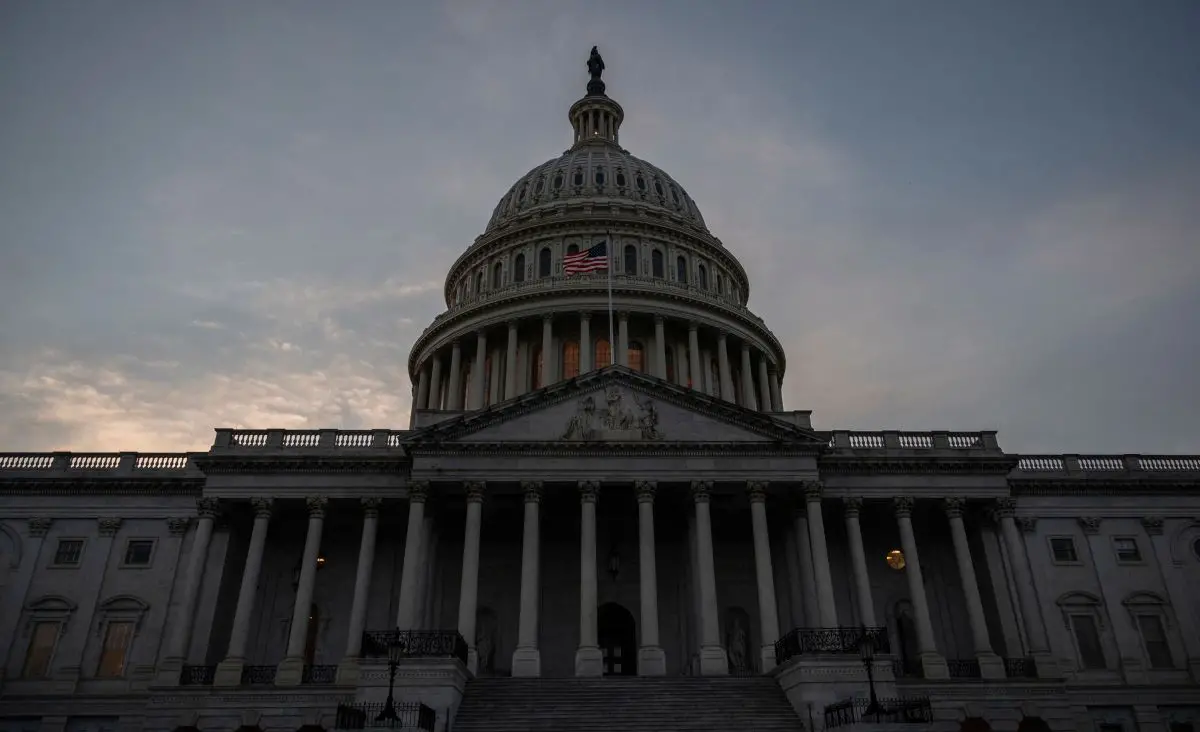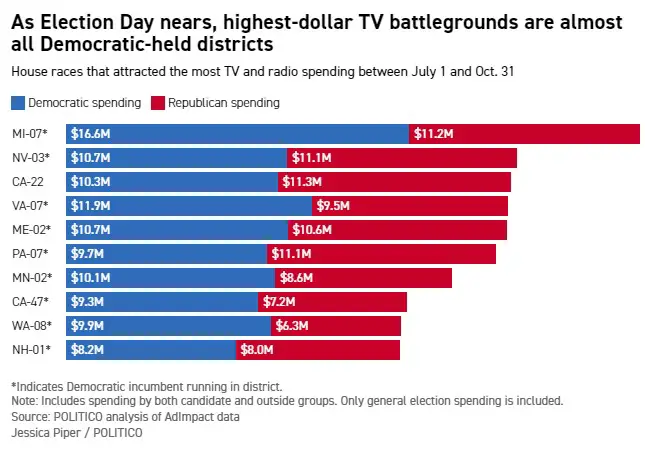If you want to know the real story about anything, you can usually follow the money. In the case of all 435 House races across the country, it’s where the money’s flowing and not flowing that tells the real story.
For Democrats in 2022, it’s about playing defense in scores of districts that Biden won easily in 2020. Suddenly they’re not very safe which is forcing Dems to try and hold some of their caucus together by dumping money into races they should be able to ignore. Out of all their expenditures, only one major race is for a seat currently held by a Republican which means all the money being poured into House races by Democrats is being burned simply to try and save incumbents:
The battle for control of the House has been spreading into bluer and bluer turf as Election Day creeps nearer, with more than 60 percent of ad spending the past two months flowing into districts President Joe Biden won by 5 or more points just two years ago.
The spending landscape illustrates the challenging pattern for Democrats and their slim majority: Many of their most vulnerable seats have already slid off the edge of the map, and Republicans are pushing them back even further, forcing an expensive defense of many seats that they and Biden both carried in the last election.
Here’s an accompanying chart illustrating just how much the DCCC is spending to save Democratic incumbents around the country:
Furthermore, out of the 24 districts that have attracted at least $5 million in advertising, Democrats are defending 20 of them:
Twenty-four House districts attracted at least $5 million in TV and radio spending from each party between July 1 and Oct. 31, according to a POLITICO analysis of data from AdImpact.
Democrats are defending 20 of the 24 districts, while only three — California’s 22nd District, New Mexico’s 2nd District and New York’s 22nd District — are currently held by Republicans.
Those three seats were each made more competitive via redistricting. One new seat, Colorado’s 8th District, is a possible pickup opportunity for both parties. The highly targeted districts include a handful of seats that Trump won in 2020 held by Reps. Jared Golden (D-Maine), Matt Cartwright (D-Pa.) and Cindy Axne (D-Iowa).
Being forced to play defense on seats that should be winnable for Dems without millions of dollars will take money away from other races that may already be a lost cause. While some analysts are predicting the GOP could win up to 20 seats, the number could be far higher according to Rep. Darin LaHood, finance chair of the National Republican Congressional Committee:
Republican Congressman Darin LaHood expects the GOP to capture an additional 20 seats in the House and maybe even 45, he says.
Though our POLITICO prognosticators say 20 is more likely.
“If we get only 10, that will be a disappointment,” LaHood told Playbook in a phone interview. LaHood is the finance chair of the National Republican Congressional Committee in charge of raising funds for candidates.
“It picks up every single day,” the Illinois Republican said, his voice a little hoarse because he had just come from cheering on his high school son’s soccer team.
Winning 45 seats would be the high end for Republicans in the current environment. It’s not that it’s impossible, but gains made in 2020 will make it harder to find that many vulnerable districts. Then again, the definition of “safe Dem” or “likely Dem” seems to be shifting. The opportunities for pickups seem to keep expanding as generic ballot polls indicate more GOP enthusiasm and more independents turning away from Democrats.
We’ll know soon enough as we head into the final campaign weekend before Election Day on Tuesday, Nov. 8.
Donate Now to Support Election Central
- Help defend independent journalism
- Directly support this website and our efforts

